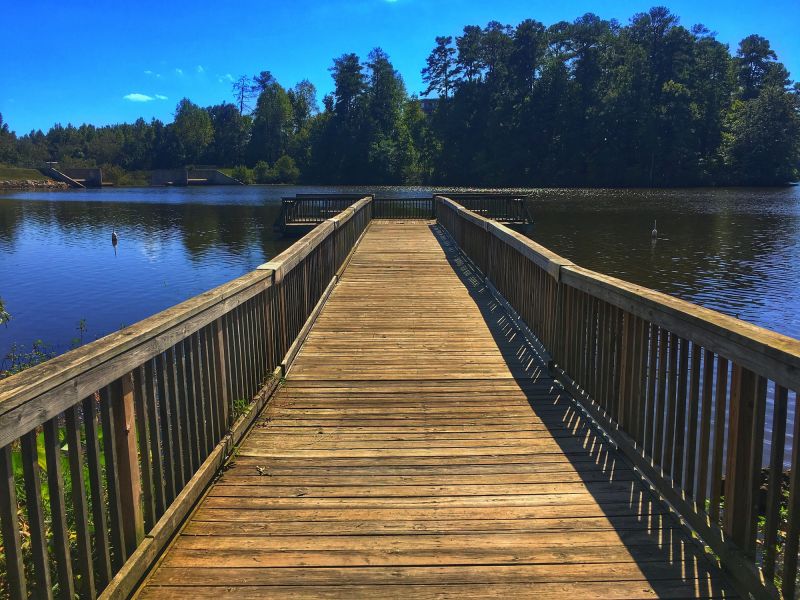Top Water Dock Installation Products For Professional Results
Equip yourself with industry-leading products that help achieve professional-grade water dock installations at home or commercially.
 Water dock installations require a range of specialized products to ensure stability, safety, and durability. From the initial foundation to the finishing touches, selecting the right components is essential for a successful setup. Durable pilings and sturdy floats form the backbone of most dock systems, providing a reliable platform that can withstand water conditions and usage demands. These foundational elements are typically constructed from materials like treated wood, composite, or high-density polyethylene, each offering different advantages in terms of longevity and maintenance.
Water dock installations require a range of specialized products to ensure stability, safety, and durability. From the initial foundation to the finishing touches, selecting the right components is essential for a successful setup. Durable pilings and sturdy floats form the backbone of most dock systems, providing a reliable platform that can withstand water conditions and usage demands. These foundational elements are typically constructed from materials like treated wood, composite, or high-density polyethylene, each offering different advantages in terms of longevity and maintenance.
Top Overall Option
Heavy-Duty Floating Dock System
A versatile floating dock system made from high-density polyethylene modules that can be customized in size and configuration. Designed for durability and stability, it provides a reliable platform for various water activities. Its modular design allows for easy assembly and adjustments, making it suitable for different water depths and conditions.
Types of Products For Water Dock Installations
Dock Pilings
Support structures driven into the lake or riverbed to hold the dock in place, available in wood, composite, or metal options.
Floating Dock Modules
Interlocking sections that create a customizable floating platform, often made from polyethylene or other durable plastics.
Dock Fenders
Protective bumpers that prevent damage to boats and the dock structure during contact or movement.
Mooring Buoys
Floating devices used to secure boats and prevent drifting, often connected to the dock with mooring lines.
Anchor Systems
Devices such as anchors and chains used to stabilize and secure the dock in water.
Decking Boards
Surface materials for the dock platform, available in wood, composite, or plastic options for slip resistance and durability.
Lifting and Raising Devices
Hydraulic or manual systems used to raise or lower sections of the dock for seasonal adjustments or maintenance.
Cleats and Tie-Downs
Hardware for securing boats and securing the dock to fixed points or mooring lines.
Wave Attenuators
Structures designed to reduce wave impact and protect the dock from water movement.
Lighting and Electrical Accessories
Lighting fixtures and electrical outlets for safety and convenience on the dock.
Protective Coatings
Sealants and paints that protect dock materials from water damage and corrosion.
Anti-slip Surface Treatments
Materials or coatings applied to decking to provide slip resistance and safety.
Popular Choices
Flexible and easy-to-install floating platforms that can be expanded or reconfigured as needed.
Essential hardware for securing boats and managing dock stability.
Protective bumpers to prevent vessel and dock damage during contact.
Corrosion-resistant anchors for securing the dock system firmly in place.
Durable decking options designed to withstand water exposure and foot traffic.
Floating devices for securing boats and maintaining position on the water.
Illumination solutions for safety and visibility during nighttime use.
Structures designed to minimize water wave impact on the dock.
Protective coatings to extend the lifespan of wooden or composite dock components.
Equipment to elevate parts of the dock for seasonal adjustments or maintenance.
Self-adhesive tapes designed to improve traction on dock surfaces.
In addition to the main structural components, accessories such as cleats, fenders, and bumpers are integral to protecting the dock and vessels from damage. Anchoring systems, including anchors, chains, and mooring buoys, help secure the dock in place, especially in areas with strong currents or high boat traffic. Proper installation of these elements ensures the safety and functionality of the dock over time.
Maintenance products also play a crucial role in extending the lifespan of water dock systems. These include protective coatings, anti-slip surfaces, and cleaning supplies designed to withstand water exposure and environmental conditions. When selecting products for water dock installation, it is important to consider compatibility with existing infrastructure, ease of installation, and the specific water conditions of the location. By choosing quality components tailored to your needs, you can create a reliable and efficient water dock setup that enhances your waterfront experience.
Key Buying Considerations
- Assess the water conditions and depth where the dock will be installed to choose appropriate foundation and floating options.
- Consider the material of the dock components for durability, maintenance, and compatibility with water exposure.
- Determine the size and capacity needed to support the number and size of vessels expected.
- Evaluate the ease of installation and whether professional assistance is required.
- Check for compatibility between different components to ensure a cohesive system.
- Review local regulations and permits related to dock installation in your area.
- Prioritize safety features such as slip-resistant surfaces and adequate lighting.
- Think about future expansion or reconfiguration possibilities with modular systems.
- Consider the environmental conditions, such as wave action or currents, that may influence product selection.
- Estimate the total budget, including installation and ongoing maintenance costs.
- Look for corrosion-resistant hardware and materials, especially if the dock is in saltwater environments.
- Ensure that the anchoring system is suitable for the waterbed conditions.
- Evaluate the availability of replacement parts and customer support from suppliers.
- Decide on aesthetic preferences that match the surrounding environment and personal style.
- Plan for seasonal adjustments or removal if necessary due to weather or water level changes.
